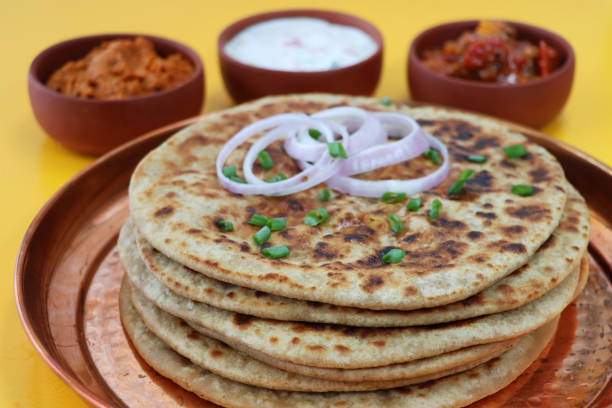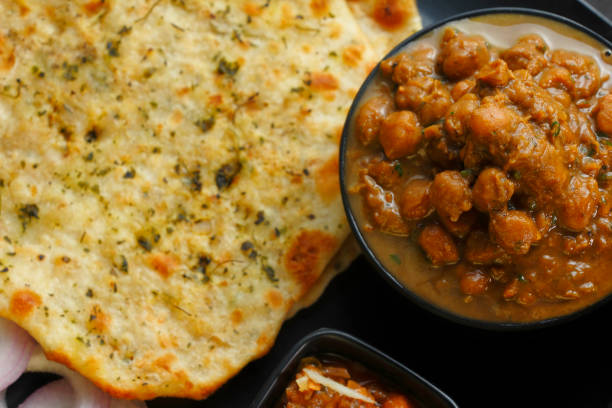Paratha is a popular type of flatbread that is commonly found in the Indian subcontinent. It is made by rolling out dough and then cooking it on a griddle or tawa. Parathas can be filled with a variety of ingredients, including potatoes, paneer, and spinach, making them a versatile and delicious food option.
One of the key factors that determines the calorie content of a paratha is the type of flour used to make the dough. Whole wheat flour is a healthier option than refined flour, as it contains more fiber and nutrients. A 100-gram serving of whole wheat paratha made with ghee or oil contains around 240 calories. On the other hand, a 100-gram serving of refined flour paratha made with ghee or oil contains around 280 calories.
A plain paratha made with wheat flour and water has approximately 120-150 calories. The addition of ghee or oil can add an additional 50-100 calories per tablespoon. So if you are looking for a low-calorie option, it is best to avoid using too much oil or ghee when making or consuming parathas.
Filled parathas, such as aloo paratha (potato filled) or paneer paratha (cottage cheese filled) can have a calorie count of around 200-250 calories per paratha. These are relatively high in calorie as compared to plain parathas.
The type of oil or ghee used to cook the paratha also plays a role in its calorie content. Ghee, which is a type of clarified butter, is high in saturated fat and contains around 112 calories per tablespoon. Oil, on the other hand, contains around 120 calories per tablespoon. Using less oil or ghee can help to reduce the calorie content of the paratha.
The filling of a paratha also affects its calorie content. Vegetable fillings, such as potato or cauliflower, are relatively low in calories, while meat or paneer fillings are higher in calories. A 100-gram serving of a paratha filled with potatoes contains around 200 calories, while a paratha filled with meat or paneer contains around 300 calories.
It’s also important to note that the way parathas are cooked can also affect their calorie content. Deep-fried parathas, such as those found in street food vendors, can have a calorie count of up to 300-350 calories per paratha due to the oil used in frying.
Parathas can be a healthy addition to a balanced diet when consumed in moderation. They are a good source of carbohydrates and can provide energy throughout the day. However, it is important to keep an eye on the calorie content and cooking method when consuming parathas, especially if you are trying to watch your weight or maintain a healthy diet.
One way to make parathas healthier is by using whole wheat flour instead of refined flour. Whole wheat flour is rich in fiber, which can help with digestion and keep you feeling full for longer periods of time. It also provides more nutrients than refined flour.
You can also make parathas with a combination of whole wheat flour and other flours like bajra, jowar, ragi etc. These flours are rich in minerals and vitamins.
Another way to make parathas healthier is by using low-fat fillings, such as grated vegetables or cottage cheese, instead of high-fat options like butter or cream.
In addition to the calorie content, it’s also important to consider the nutritional value of a paratha. Whole wheat parathas are a good source of fiber, which can help to promote a healthy digestive system. They also contain small amounts of various vitamins and minerals, such as iron and zinc. However, it’s important to note that the nutritional value of a paratha can be negatively affected by the use of excessive oil or ghee during cooking.
In conclusion, the calorie content of a paratha can vary depending on the type of flour used, the type of oil or ghee used, and the type of filling used. Whole wheat parathas made with minimal oil or ghee are a healthier option than refined flour parathas, and are also a good source of fiber. However, it’s important to keep in mind that even whole wheat parathas can be high in calories if they are cooked with excessive amounts of oil or ghee, or if they have high-calorie fillings.

 Home
Home Health
Health Diet & Nutrition
Diet & Nutrition Living Well
Living Well More
More












